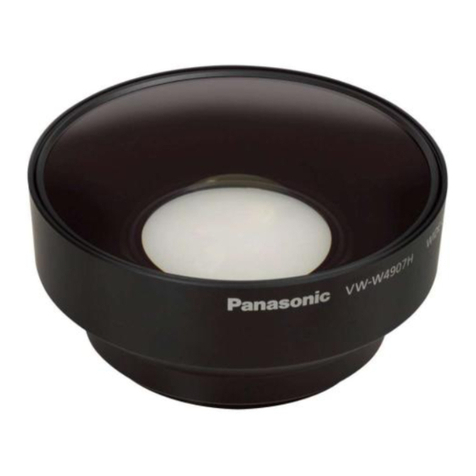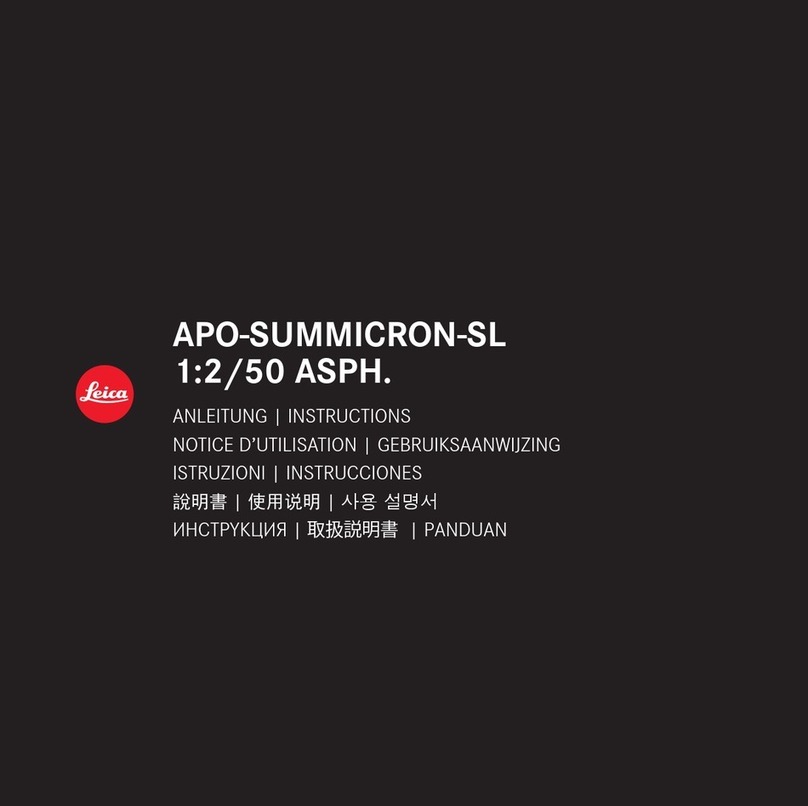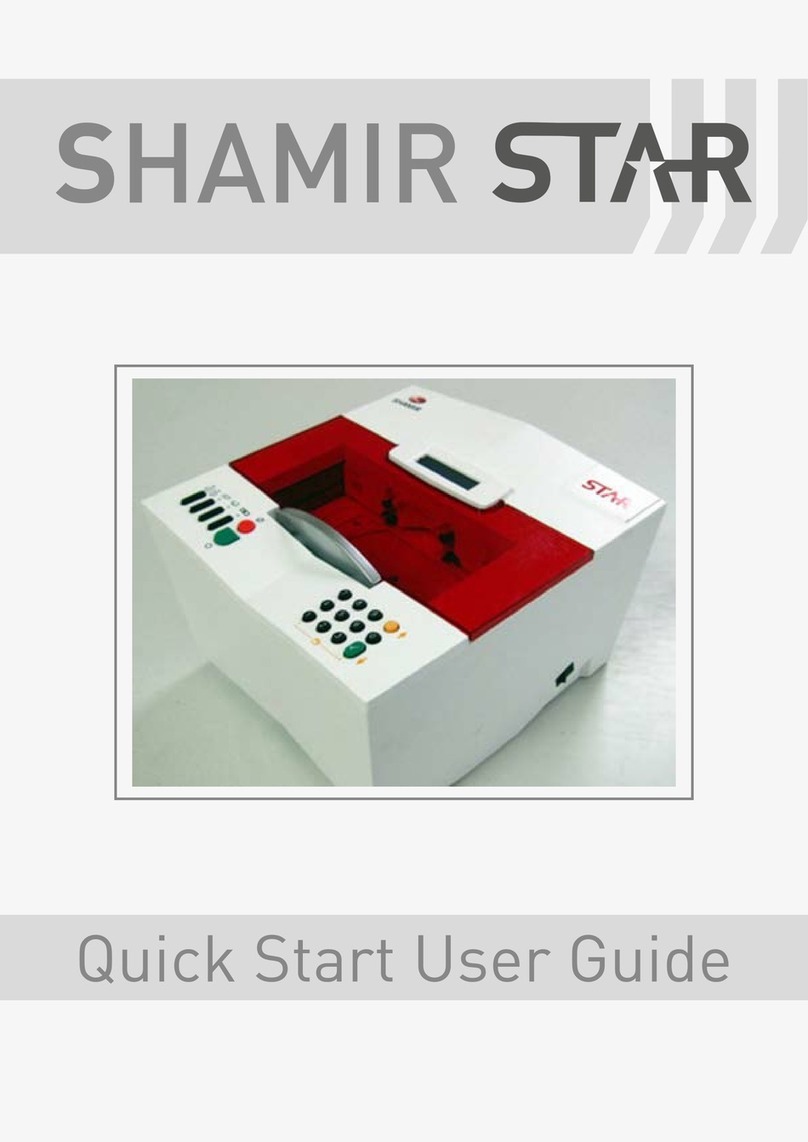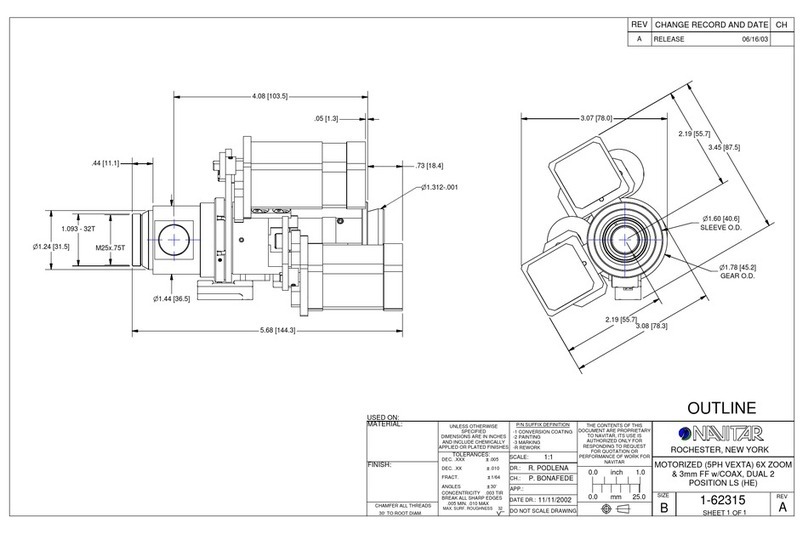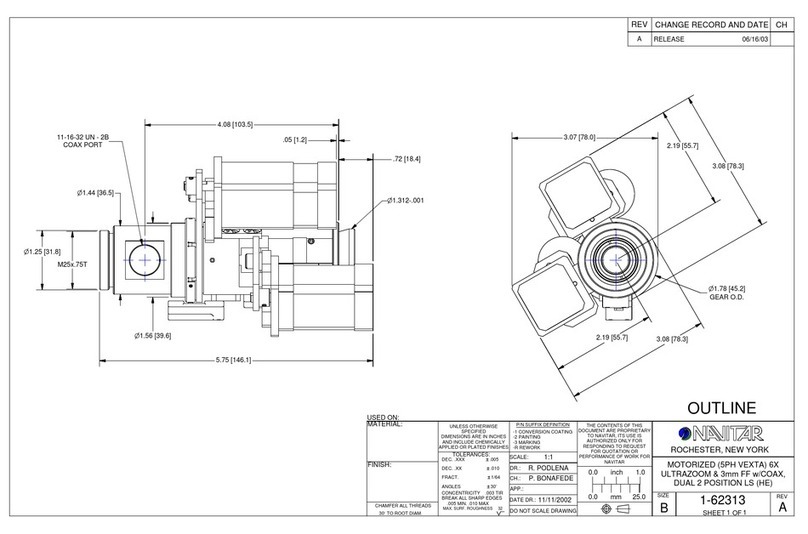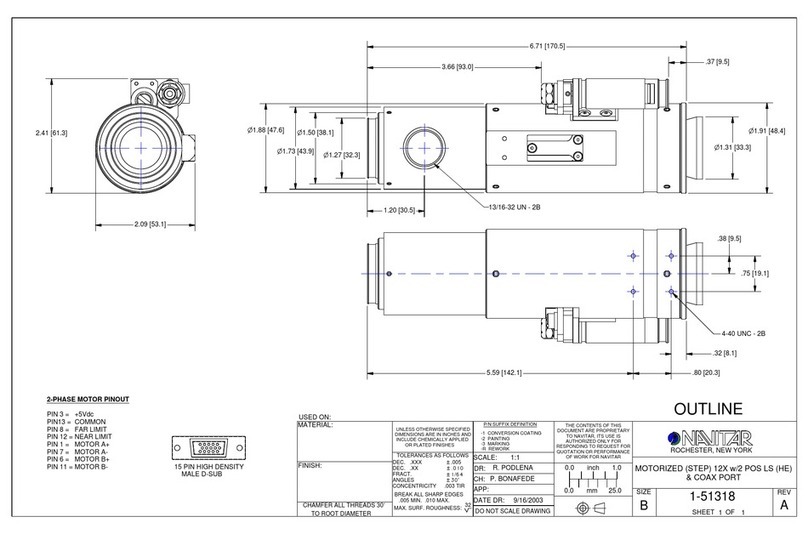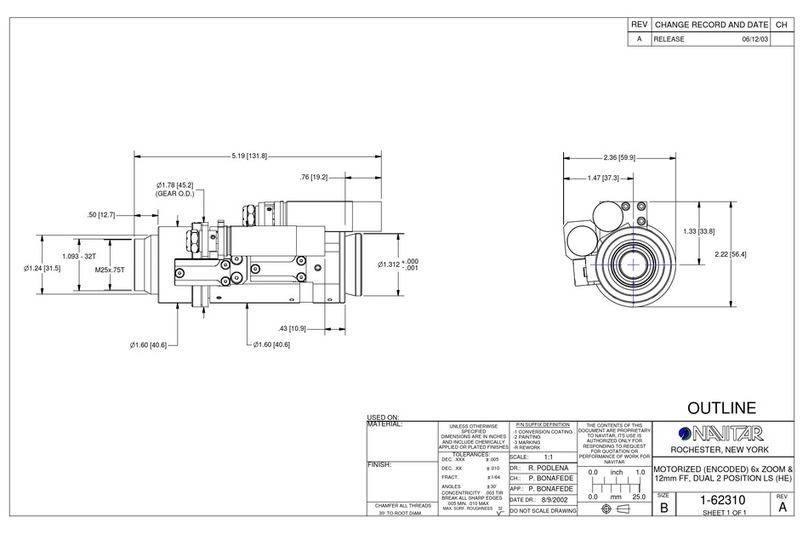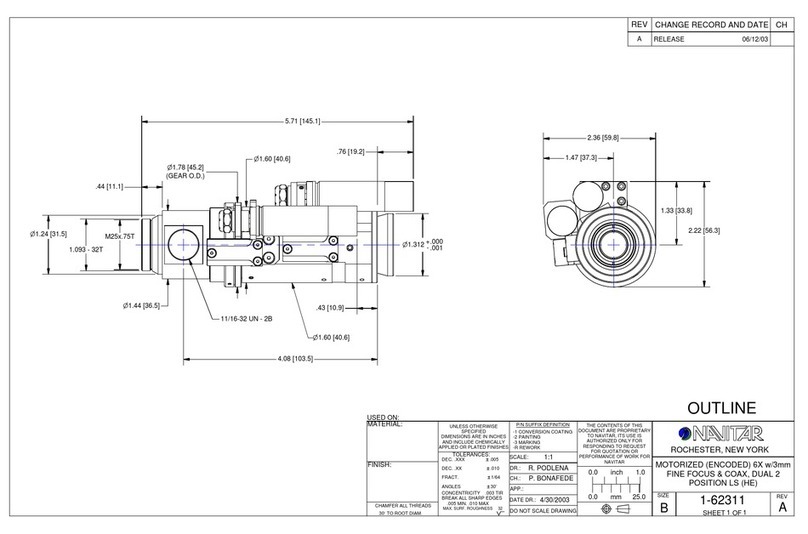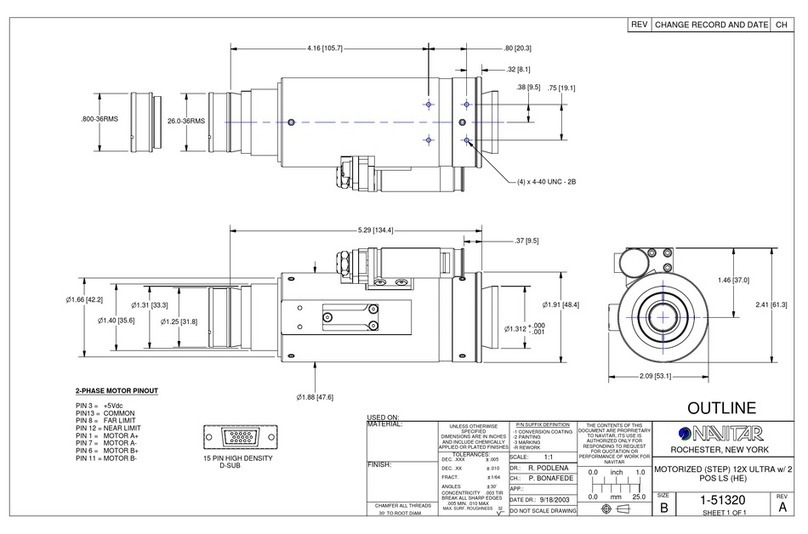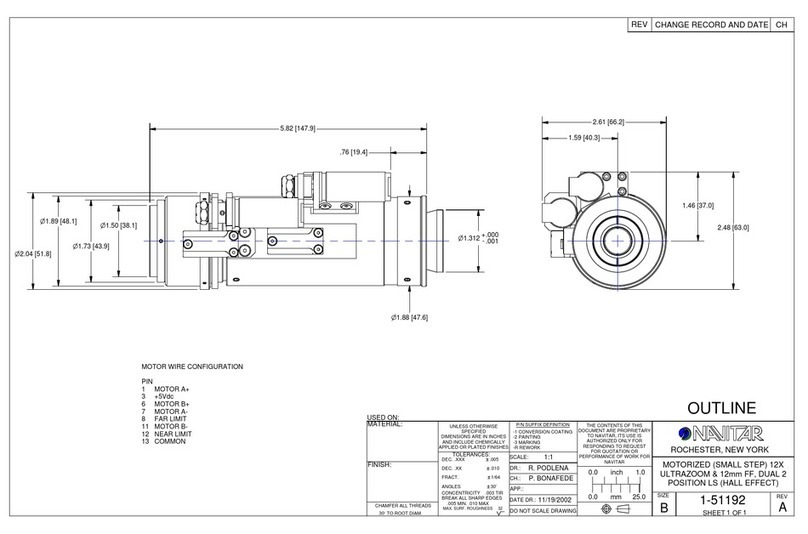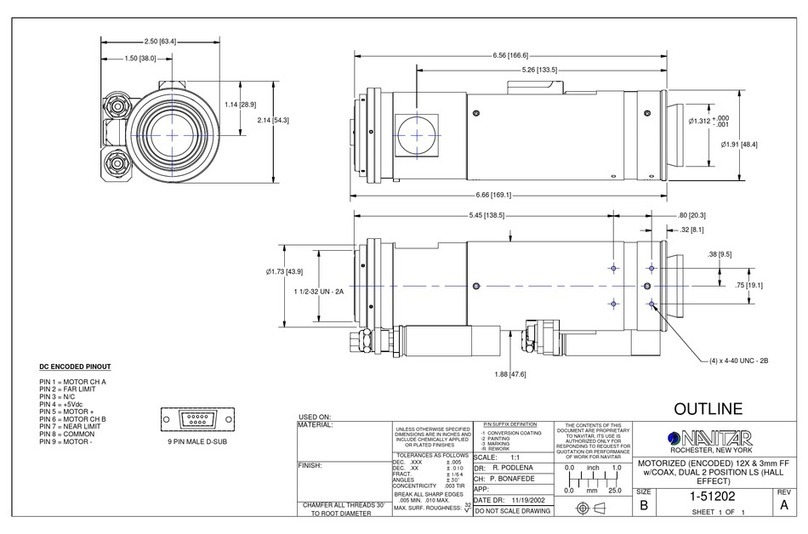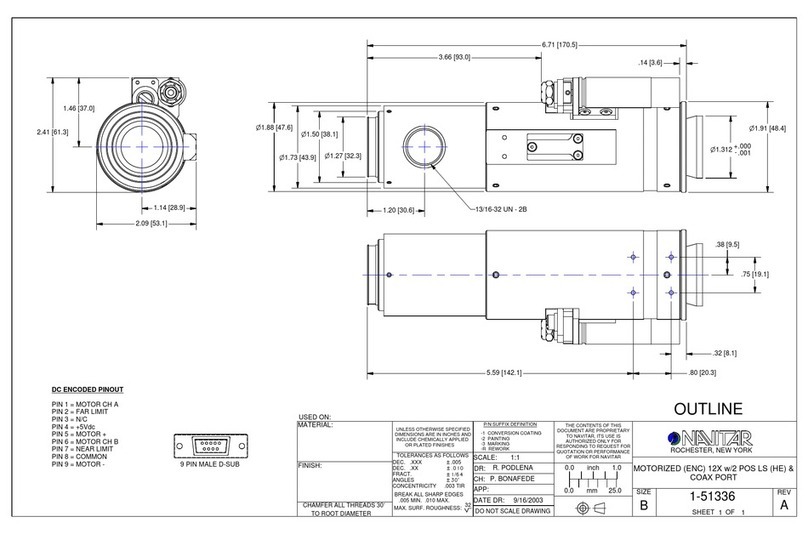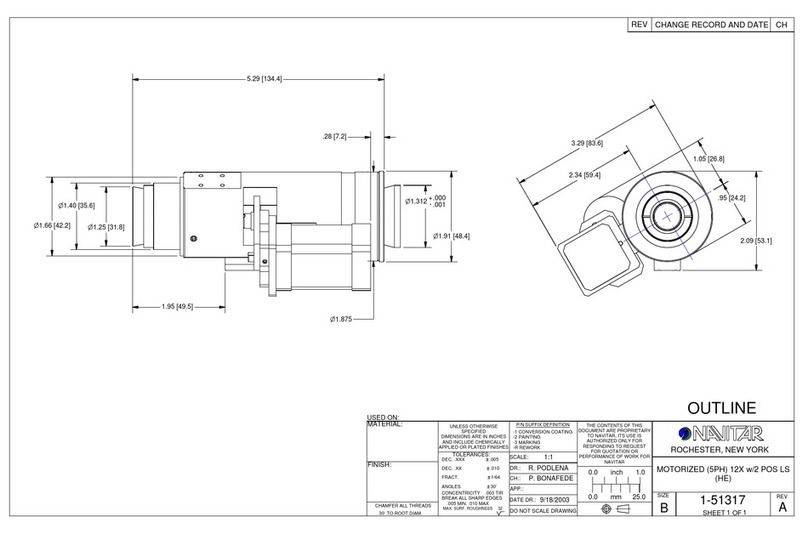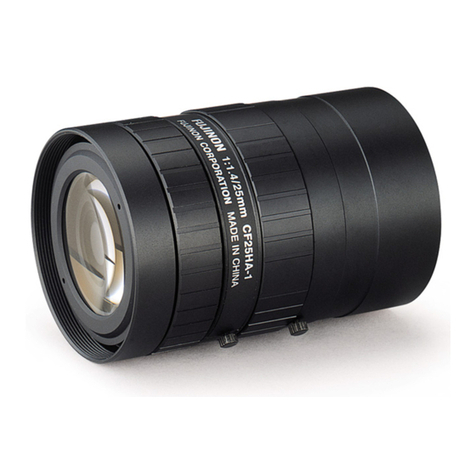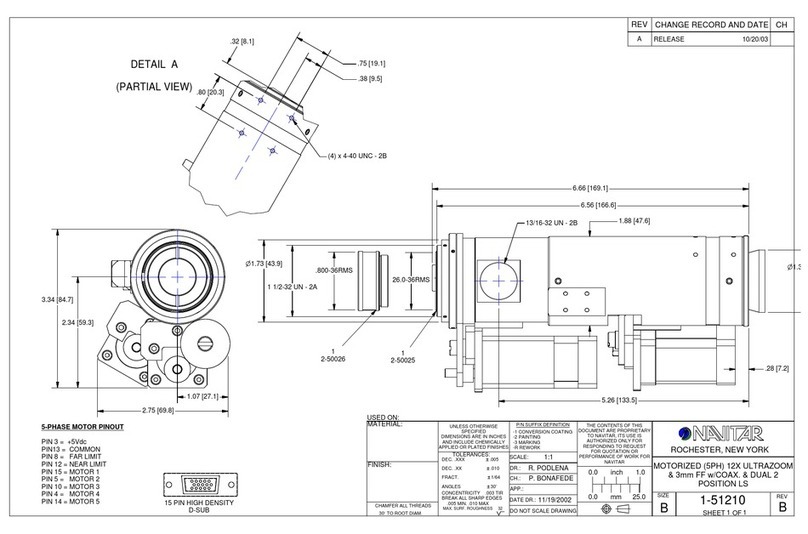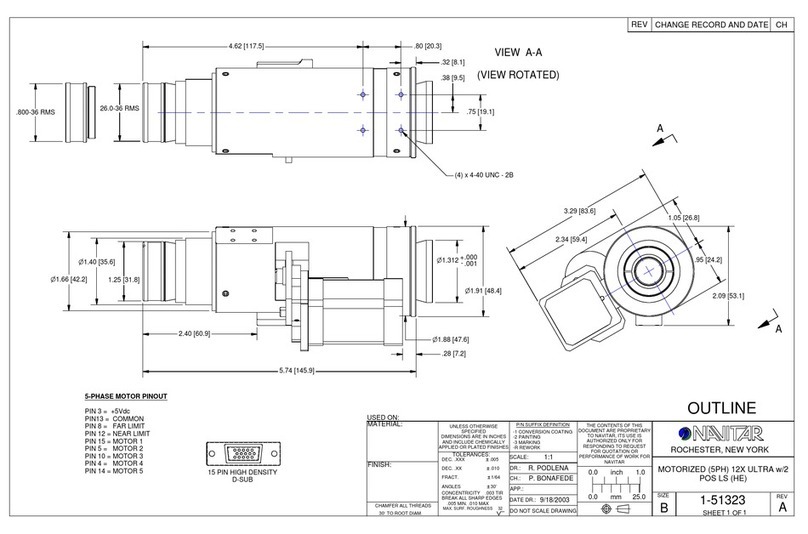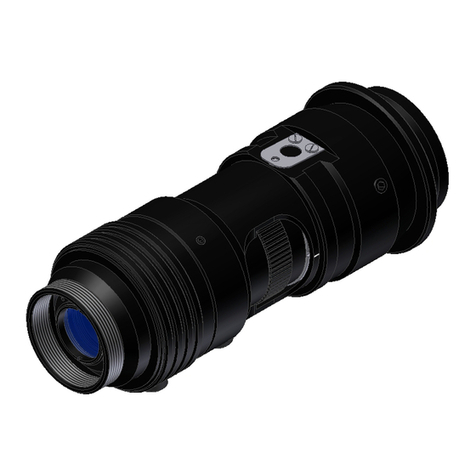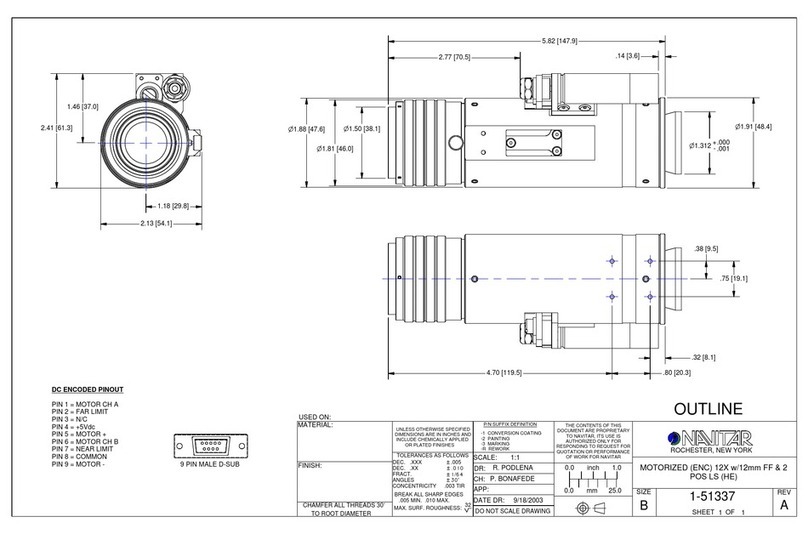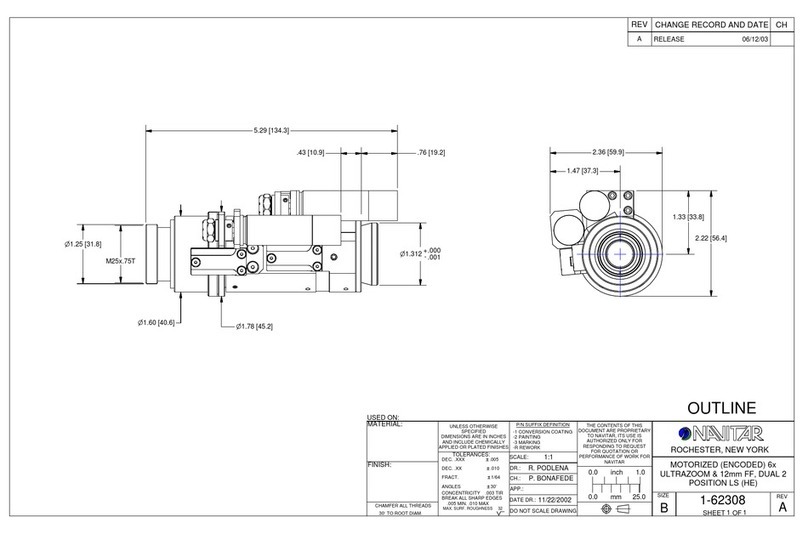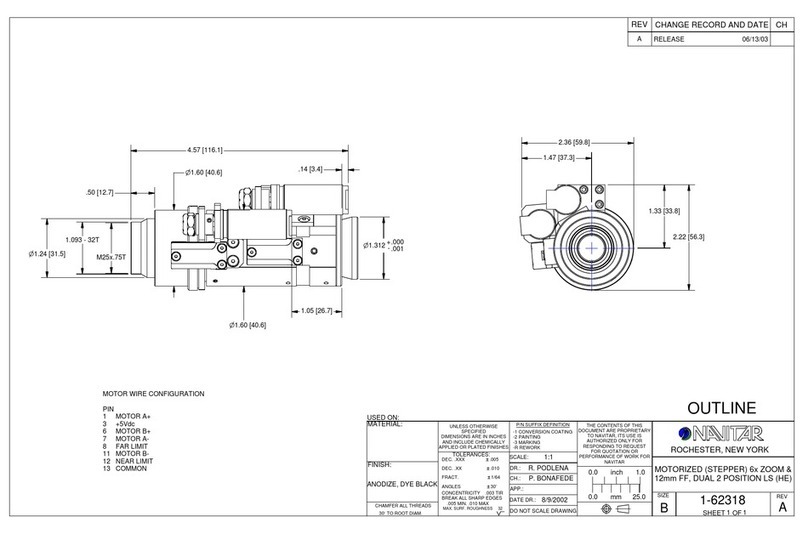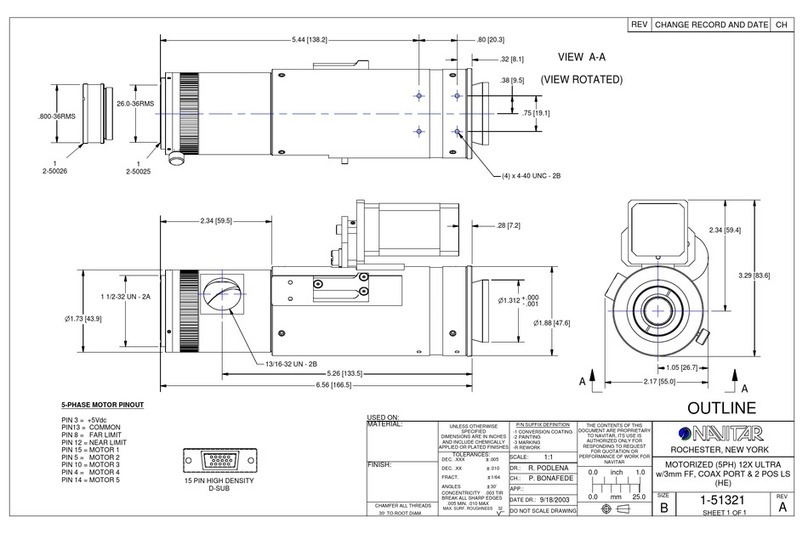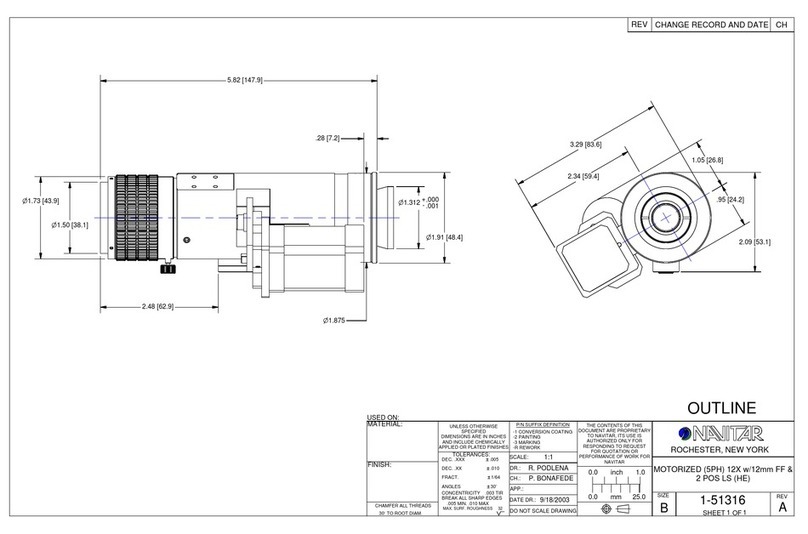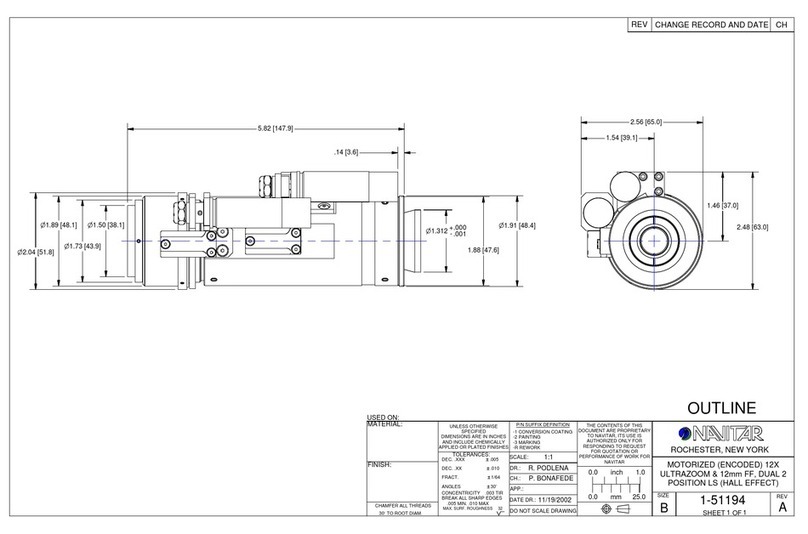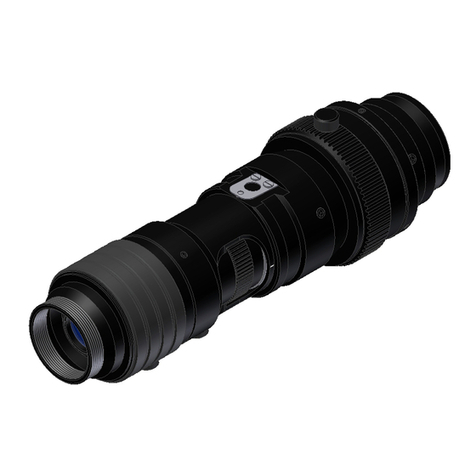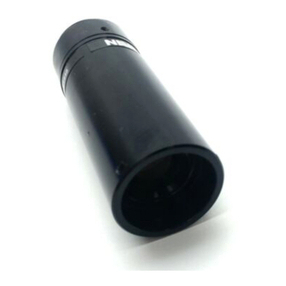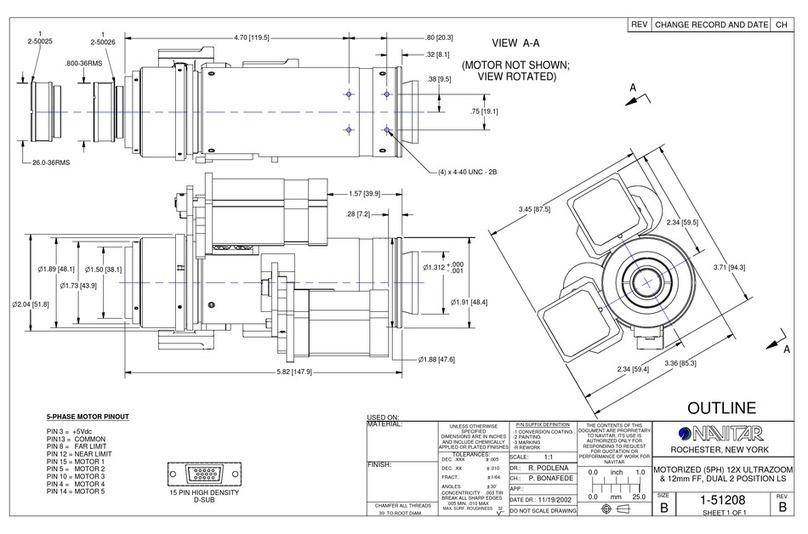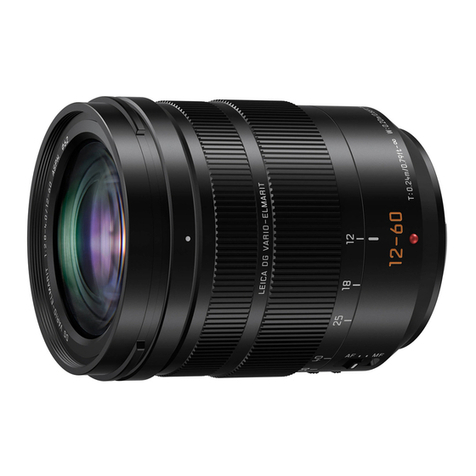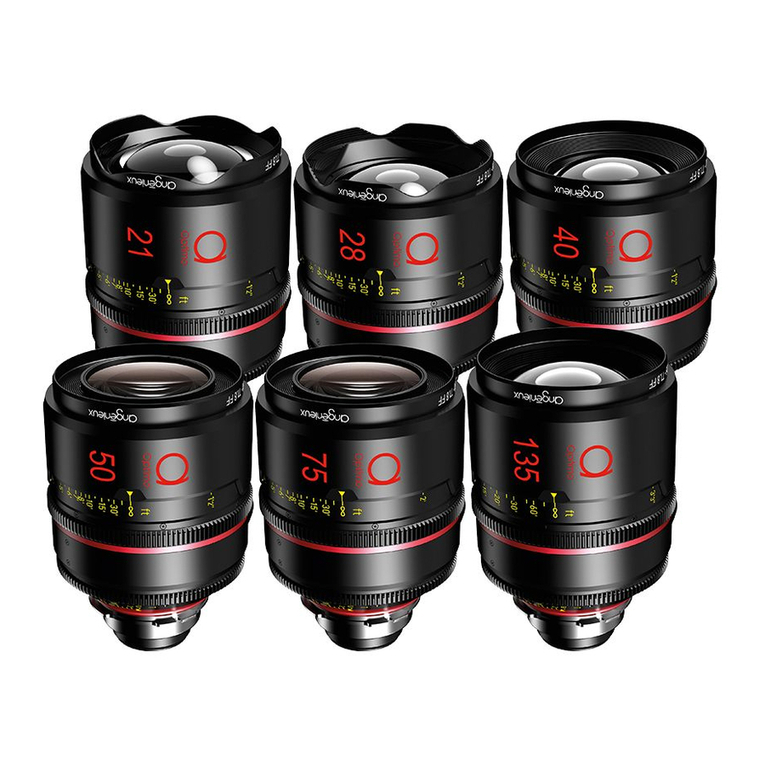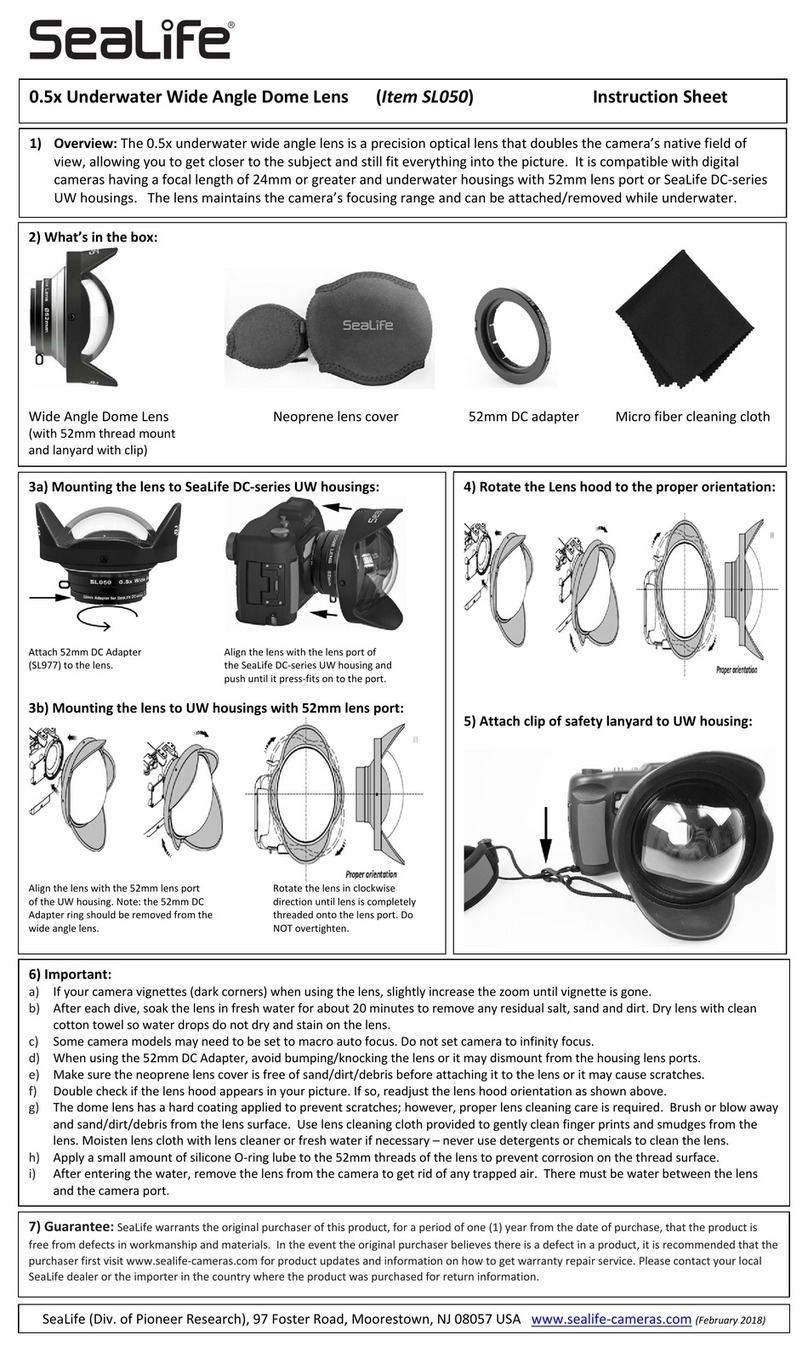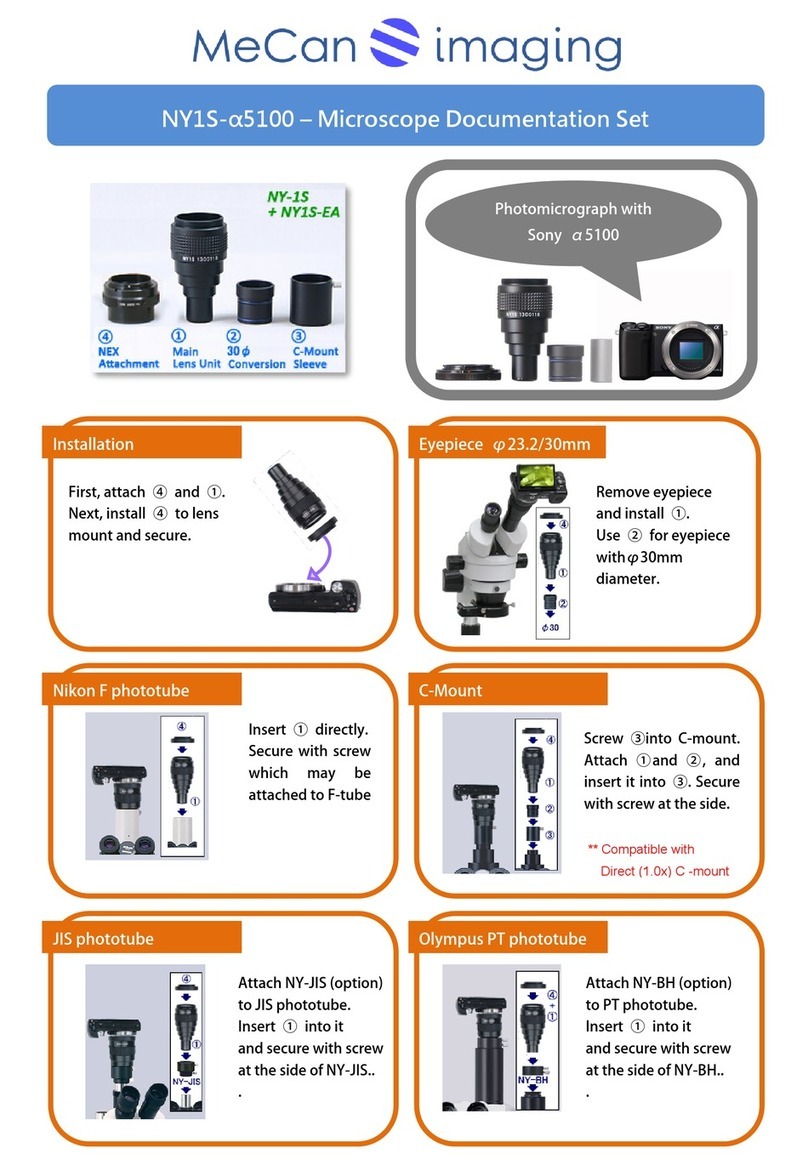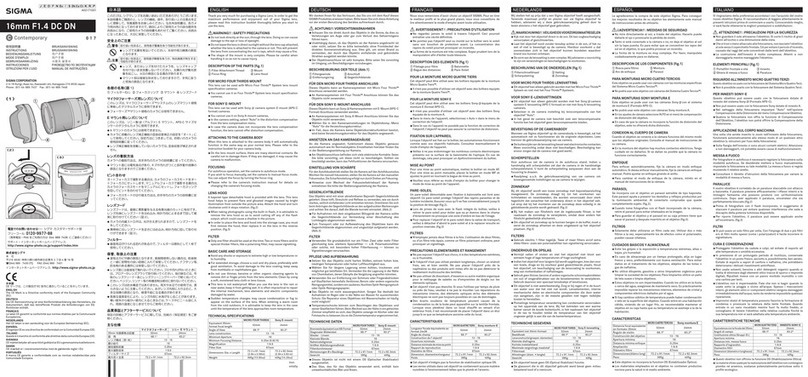
91Phone: 800-828-6778 or 585-359-4000 • Fax 585-359-4999
Telecentric Lenses
The World’s First Parfocal Telecentric Zoom Lens
The 12X Telecentric Zoom system allows users to reach a true telecentric
condition to within less than 0.3° while maintaining constant perspective
and magni cation. This means that even if the object is slightly out of
focus, the size of the image will not change. The 12X Telecentric Zoom
provides eld coverage from 50 mm down to 4 mm and the coaxial illumi-
nation allows clear viewing, even when working with mirror-like surfaces.
Also available without coaxial illumination.
Wide Magni cation Range and Ultra Long Working Distance
In the past, a telecentric lens was de ned as having xed magni ca-
tion. Not anymore! The Navitar 12X Telecentric Zoom lens allows you
to zoom in and focus over a wide variety of magni cations with a higher
level of accuracy than you ever thought possible. The 12X Telecentric
Zoom provides adjustable focal lengths over a 0.16X to 1.94X magni ca-
tion range. You no longer have to be limited by telecentric lenses that
only o er xed magni cation. Now you have eld coverage from 50 mm
down to 4 mm at a 188 mm working distance.
Zoom Telecentric System
12X Telecentric Accuracy
Telecentric Error Over Depth
-0.04
-0.03
-0.02
-0.01
0
0.01
0.02
0.03
0.04
0.00 0.50 1.00 1.50 2.00
1/4" format
1/3" format
1/2" format
Telecentric Error
(degrees) Object
N.A.
Image
N.A.
Object
Depth of
Focus
(mm)
Telecentric Error
(mm) Object Size Approx.
MTF
(Ip/mm)
Resolvable
Features
(microns)
Mag. 1/4” 1/3” 1/2” 1/4” 1/3” 1/2” 1/4” 1/3” 1/2”
0.16 0.05 0.06 -0.03 0.005 0.032 38.8 0.018 0.020 -0.009 25.0 37.3 49.7 15 33
0.23 -0.10 -0.09 -0.18 0.007 0.031 19.4 -0.017 -0.016 -0.030 17.4 26.1 34.8 22 23
0.33 -0.19 -0.18 -0.27 0.010 0.030 10.3 -0.016 -0.016 -0.024 12.1 18.2 24.3 30 17
0.47 -0.23 -0.23 -0.31 0.013 0.028 6.0 -0.012 -0.012 -0.016 8.5 12.8 17.0 39 13
0.67 -0.25 -0.25 -0.34 0.016 0.024 3.8 -0.008 -0.008 -0.011 5.9 8.9 11.9 49 10
0.96 -0.27 -0.27 -0.36 0.020 0.021 2.6 -0.006 -0.006 -0.008 4.2 6.3 8.4 59 8
1.36 -0.29 -0.29 -0.38 0.024 0.017 1.8 -0.004 -0.005 -0.006 2.9 4.4 5.9 71 7
1.94 -0.25 -0.24 -0.29 -0.028 0.015 1.3 -0.003 -0.003 -0.003 2.1 3.1 4.1 84 6
Distortion < 0.1% for all magni cations. Working Distance = 188 mm for all magni cations.
12X Telecentric Lens Speci cations
No Need to Change Lenses
The easily adjustable eld of view and magni cation allow
our Navitar 12X Telecentric lens to adjust to meet your
exact requirements. It’s no longer necessary to change
lenses, mix and match base lenses with attachment lenses
or recalibrate. One lens, the 12X Telecentric, really does
it all! Straight, as well as right angle, versions allow OEM
designers to best t the systems to their mechanical design.
Wide Range of Applications
Speci cally designed for precise dimensional measurement
of objects or pattern recognition, the 12X Telecentric Zoom
has many applications. It’s ideal for measuring three-di-
mensional objects with deep features, such as well plates,
electrical connector pins, and other precision parts. It’s
also the perfect lens for viewing inconsistently placed parts
on a conveyer belt.
